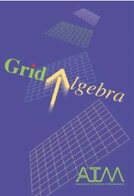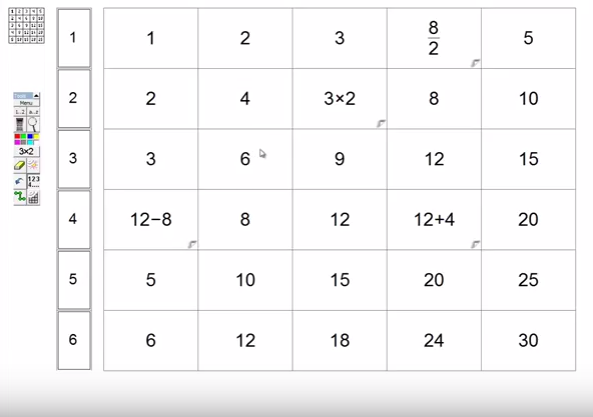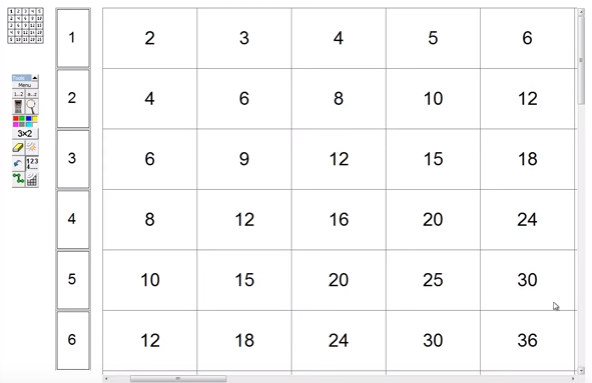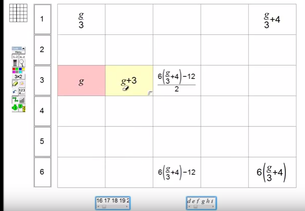On a Saturday in the middle of June, I found myself at the Sheffield Hallam University ‘Mixed Attainment Maths’ conference.
The reason for my attendance was that I had begun to notice a visibly growing interest in the maths community, (particularly on Maths social media sites), about teaching maths in mixed attainment groups. I saw the conference as an opportunity to gain some deeper insight and understanding of the pedagogy associated with it.
I have always been interested in understanding different teaching and learning styles, and as teaching mixed attainment groups is an area I have had little experience of, I wondered whether it would be something that could work at my current school. I teach in a comprehensive school where classes are setted by ability group, however, as so often is the case, even in a setted environment there is a wide range of abilities. So, my hope was that whatever I would observe and learn at conference, I might be able to apply the principle of in my setted but widely varied ability group – fortunately my hopes were answered and that is exactly what I was able to take away.
The speakers at conference were a varied mix of people, from those who had tutored me during my PGCE years and people that I follow on twitter. Their views had a huge impact on my way of thinking in regards to educational pedagogy and had greatly influenced my approach to teaching and my interactions with students on day-to-day basis.
The day kicked off with an introduction from a Prof Hillary Povey who had some fantastic ideas. One which sticks in my mind was the power of ‘YET’ (the idea that something is not clear YET but will become clearer later). I managed to have a catch up with Prof Hillary during registration. She is currently working part time and is involved in educational research. She spoke with great enthusiasm about the current era in education, in particular about ‘Learning without limits ‘ .She is hopeful that the new curriculum changes in Maths will bring profound changes into the educational system. Creating a system where we as educationalists have high expectations for all students and provision of equal learning opportunities to all universally rather than based on ability level. The previous era of such hope was in the 1970’s where some excellent resources for mixed ability teaching were developed, e.g Smile activities (a resource that I often use and found to be fantastic in meeting its aims) more resources can be found on the stem website here
https://www.stem.org.uk/elibrary/resource/25755
First workshop I attended was run by Tom Francome and was about Grid algebra by ATM. GRID Algebra is a visual and kinaesthetic way to learn number and algebra and pre-algebra. Learners build links between numeric and algebraic expressions and numbers and physical movements around a grid. It was interesting to see how a simple multiplication grid can be used to improve students understanding of fundamental principles of algebra. I found it an excellent tool not only to tackle common misconceptions in algebra but also make students get hooked into the learning. Students can begin to solve quite complex algebraic equations without realising it. It of course lends itself very well to mixed attainment groups where students can move according to their own pace.
The reason for my attendance was that I had begun to notice a visibly growing interest in the maths community, (particularly on Maths social media sites), about teaching maths in mixed attainment groups. I saw the conference as an opportunity to gain some deeper insight and understanding of the pedagogy associated with it.
I have always been interested in understanding different teaching and learning styles, and as teaching mixed attainment groups is an area I have had little experience of, I wondered whether it would be something that could work at my current school. I teach in a comprehensive school where classes are setted by ability group, however, as so often is the case, even in a setted environment there is a wide range of abilities. So, my hope was that whatever I would observe and learn at conference, I might be able to apply the principle of in my setted but widely varied ability group – fortunately my hopes were answered and that is exactly what I was able to take away.
The speakers at conference were a varied mix of people, from those who had tutored me during my PGCE years and people that I follow on twitter. Their views had a huge impact on my way of thinking in regards to educational pedagogy and had greatly influenced my approach to teaching and my interactions with students on day-to-day basis.
The day kicked off with an introduction from a Prof Hillary Povey who had some fantastic ideas. One which sticks in my mind was the power of ‘YET’ (the idea that something is not clear YET but will become clearer later). I managed to have a catch up with Prof Hillary during registration. She is currently working part time and is involved in educational research. She spoke with great enthusiasm about the current era in education, in particular about ‘Learning without limits ‘ .She is hopeful that the new curriculum changes in Maths will bring profound changes into the educational system. Creating a system where we as educationalists have high expectations for all students and provision of equal learning opportunities to all universally rather than based on ability level. The previous era of such hope was in the 1970’s where some excellent resources for mixed ability teaching were developed, e.g Smile activities (a resource that I often use and found to be fantastic in meeting its aims) more resources can be found on the stem website here
https://www.stem.org.uk/elibrary/resource/25755
First workshop I attended was run by Tom Francome and was about Grid algebra by ATM. GRID Algebra is a visual and kinaesthetic way to learn number and algebra and pre-algebra. Learners build links between numeric and algebraic expressions and numbers and physical movements around a grid. It was interesting to see how a simple multiplication grid can be used to improve students understanding of fundamental principles of algebra. I found it an excellent tool not only to tackle common misconceptions in algebra but also make students get hooked into the learning. Students can begin to solve quite complex algebraic equations without realising it. It of course lends itself very well to mixed attainment groups where students can move according to their own pace.
Second workshop was my highlight of the day. It was run by Andrew Blair, the creator of the inquiry maths website. He spoke passionately about teaching mixed attainment groups and his website is full of excellent prompts that can be used in any maths lessons.
He ran an activity with us to give us a flavour of how it would work in a class with students. It was an eye opener to see how a prompt in the middle of the page led us into quite a very high level of maths discussion involving the use of DESMOS to graph our findings.
It was very obvious that in his class, students would work in collaboration, building on prior knowledge and constructing their own path in learning mathematics with teacher playing the role of facilitator to help navigate this journey of learning. Although Andrew intended to run his prompts in mixed attainment classes, I think they would be equally useful in a setted group situation. I envisage myself using these ideas in near future.
Third workshop was run by Colin Jackson and was an introduction to resources freely available on ‘cre8ate maths.’ Again, the way the tasks were set, they were extremely applicable to mixed attainment groups. The particular task that we worked on during the session was called ‘Building shapes’, again another fantastic low floor high ceiling resource.
Fourth workshop was run by Leann de Belder and was on problem solving in a mixed- attainment class. In this session we discussed different views on fluency problem solving and reasoning. The highlight of the session for me was the notion that students brought their own prior knowledge to the lesson, and attempted carefully set problems to help them explore their own mathematics, with teacher facilitating their learning through modelling and questioning.
On reflection, of course developing lessons that are suitable for mixed attainment is time consuming but with collaboration from colleagues, we as teachers genuinely do have a mechanism in mixed attainment teaching to open up whole new segments of engaging maths to a wider student audience than we currently do in our current system of setting pupils.
He ran an activity with us to give us a flavour of how it would work in a class with students. It was an eye opener to see how a prompt in the middle of the page led us into quite a very high level of maths discussion involving the use of DESMOS to graph our findings.
It was very obvious that in his class, students would work in collaboration, building on prior knowledge and constructing their own path in learning mathematics with teacher playing the role of facilitator to help navigate this journey of learning. Although Andrew intended to run his prompts in mixed attainment classes, I think they would be equally useful in a setted group situation. I envisage myself using these ideas in near future.
Third workshop was run by Colin Jackson and was an introduction to resources freely available on ‘cre8ate maths.’ Again, the way the tasks were set, they were extremely applicable to mixed attainment groups. The particular task that we worked on during the session was called ‘Building shapes’, again another fantastic low floor high ceiling resource.
Fourth workshop was run by Leann de Belder and was on problem solving in a mixed- attainment class. In this session we discussed different views on fluency problem solving and reasoning. The highlight of the session for me was the notion that students brought their own prior knowledge to the lesson, and attempted carefully set problems to help them explore their own mathematics, with teacher facilitating their learning through modelling and questioning.
On reflection, of course developing lessons that are suitable for mixed attainment is time consuming but with collaboration from colleagues, we as teachers genuinely do have a mechanism in mixed attainment teaching to open up whole new segments of engaging maths to a wider student audience than we currently do in our current system of setting pupils.




 RSS Feed
RSS Feed
